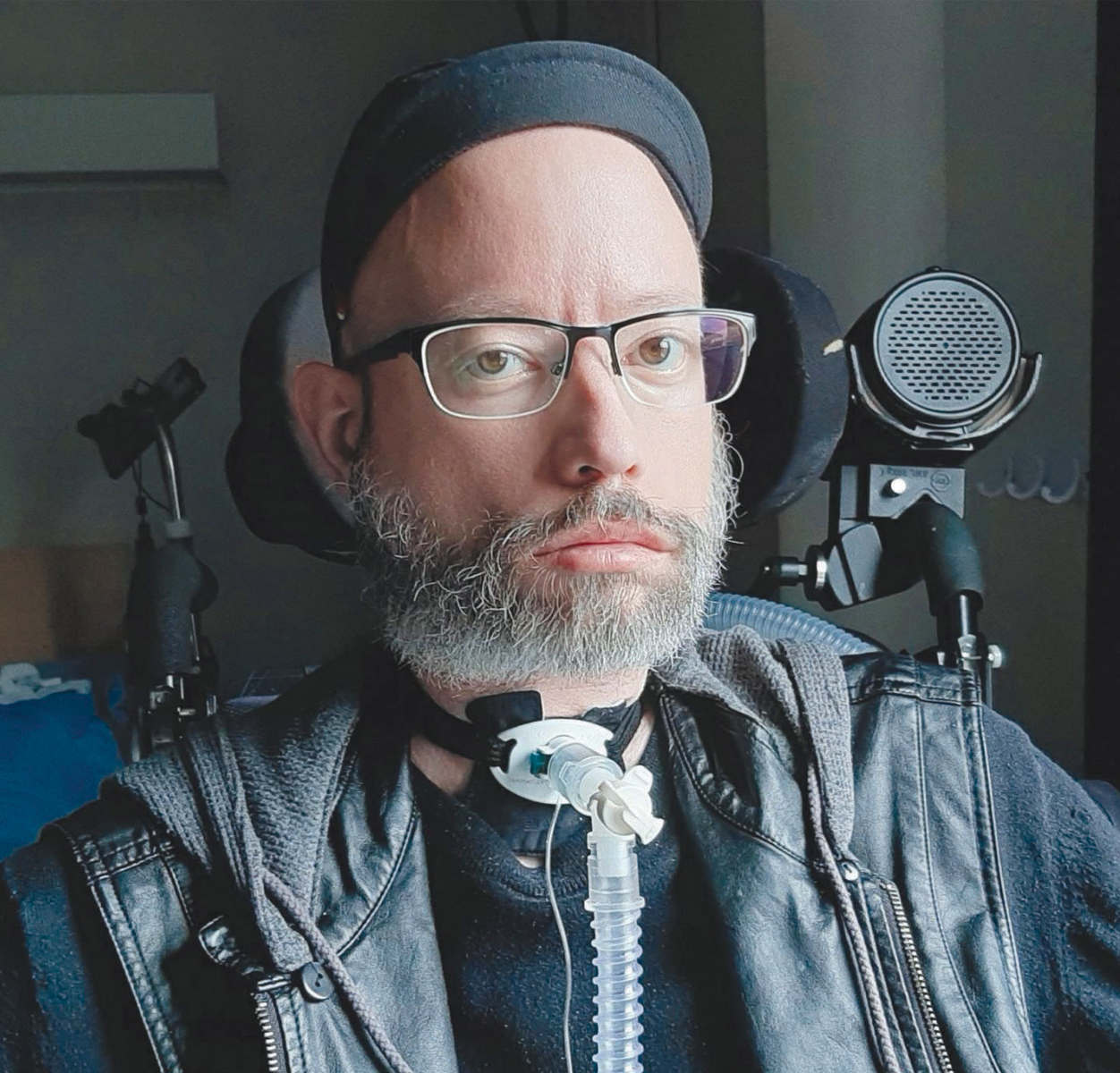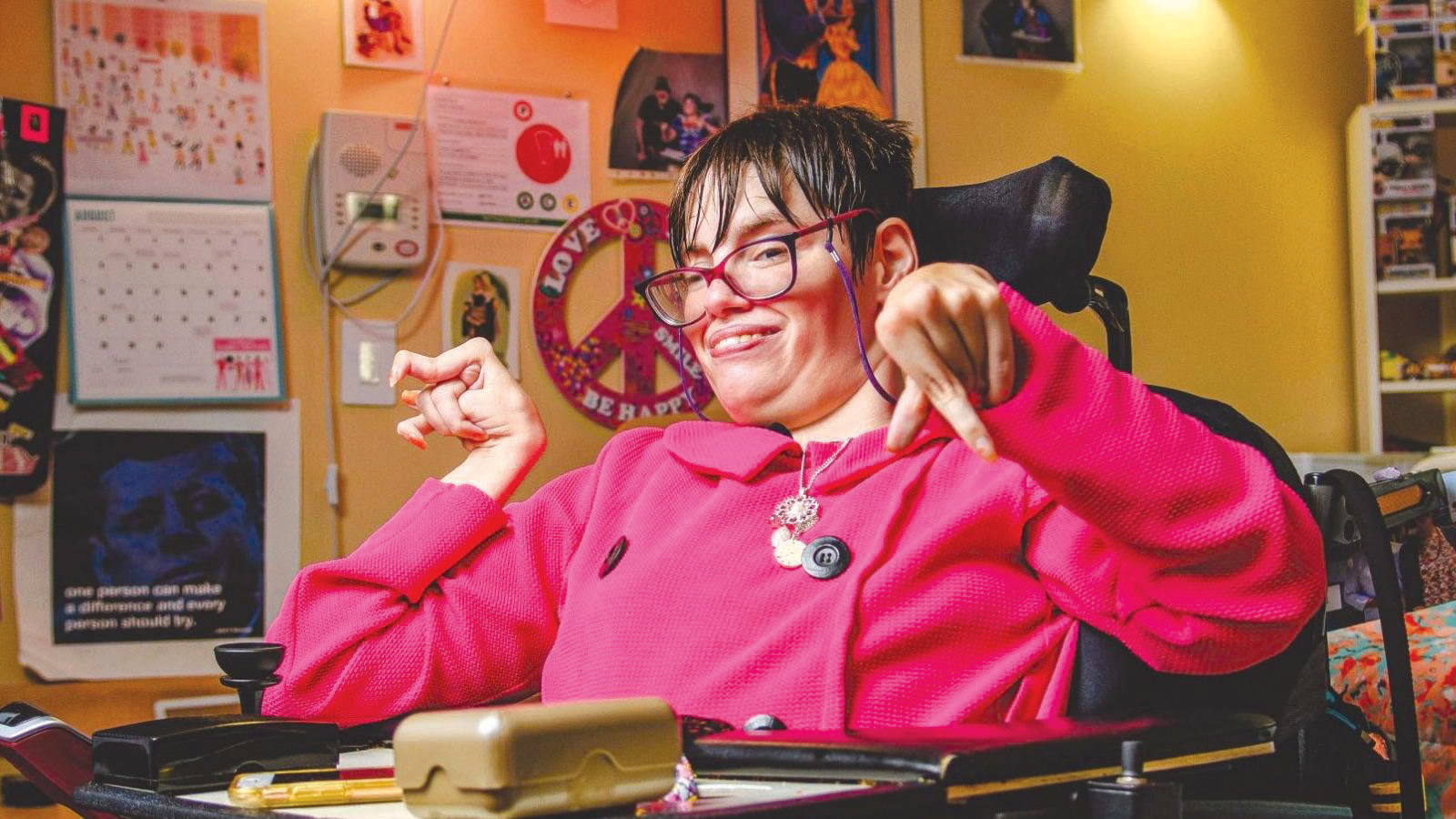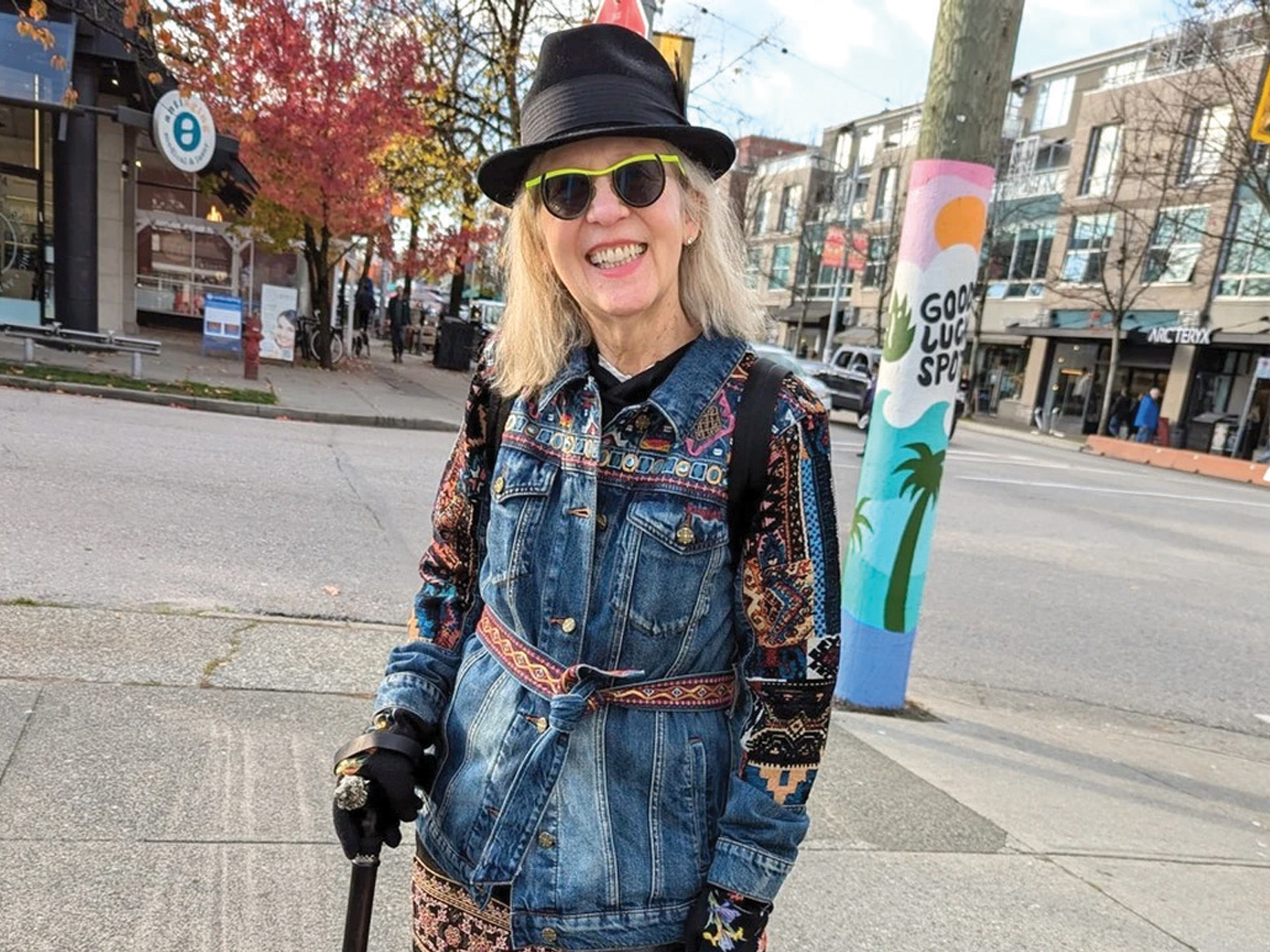Without proper support to live at home, there are few, if any choices
By Meagan Gillmore
Sometimes, the most exciting place Victoria Levack can go is her bedroom. The decorations testify to the 30-year-old’s interests and aspirations. A constellation of photos of her with celebrities at Hal-Con, Halifax’s annual comic convention, fills one section. Figurines of superheroes and Disney princesses surround the room. Belle from Beauty and the Beast and Wonder Woman are her favourites: strong, intelligent women, ready to protect others—both reflect parts of Levack’s personality, too.
Levack spends much of her time advocating for equal access for people with disabilities, whether that’s sexual education or, most pressingly, housing. For the past decade, she has lived, reluctantly, at the Arborstone Enhanced Care facility in Halifax. She doesn’t dream of living in a castle; she just wants a bachelorette apartment where she can cook her own meals and choose recreational activities beyond bingo games with seniors.
Levack lives with spastic quadriplegic cerebral palsy and needs help with dressing and personal hygiene. She drives her electric wheelchair with her right pointer finger and uses her left hand for everything else. Spending her 20s in a long-term care facility was never Levack’s plan. She first moved to Halifax for university from her small town of Berwick, NS. However, adequate care wasn’t available in her university residence so she got sick.
When she returned to her parents’ home caregiving duties fell to her stepmother, who was often scared to leave her alone in the house without support. A shared housing program with support staff refused her complex needs. She moved to Arborstone. “I didn’t get to make a choice,” she says.
It’s isolating
Pre-pandemic, Levack limited time at Arborstone to mealtimes and bedtime, spending her days out with friends, volunteering, people-watching or going to the movies. She liked Arborstone’s dances but didn’t invite friends. “I’m embarrassed by where I live,” she admits. COVID-19 restricted her life to just her floor. “We were the last group to get our freedom,” she says in early July, a day after spending time with her parents at the waterfront, her first outing since restrictions lifted.
The pandemic has taken a stark toll with deaths in our care facilities counting for 2/3 of the national total. There’s been call for reform but no discussion about people with disabilities that live in the system. “Media talks about our elders,” observes Levack. “They forget that we—young adults—also exist in this system.”
Levack is one of 87 Nova Scotians ages 30-49 who live in long-term care facilities. Another 21 are under the age of 30. Across the country, thousands well below old age are similarly housed. In Ontario, 12%, (4,700), LTC residents are under 65. Like Levack, not everyone wants to be there.
Some are hoping the outcry over long-term care facilities will bolster enthusiasm for government funding programs that make living at home a viable option. With direct, individualized funding, people with disabilities are given money to hire and train staff, but programs can be hard to access and funding is often precarious. The most effective programs also incorporate support systems to help people manage their care and connect with their community.
Throughout the pandemic, Levack has been exploring how she can move out of her residence and get the supports she needs to live independently. COVID-19 has tested her resolve. “I have a lot more anger now,” she says. “I have a lot less faith in people. If this pandemic has taught me anything, it’s that disabled people aren’t viewed as full citizens.”
Systemic discrimination
Claire McNeil, a lawyer with Dalhousie Legal Aid Service in Halifax, says that living in long-term care impedes young adults’ ability to meaningfully participate in their communities. In her opinion, it’s a classic example of systemic discrimination—and a landmark new ruling by Nova Scotia’s top court supports that argument. In October, the Nova Scotia Court of Appeal found that systemic discrimination occurred in a case involving three people with disabilities housed in a psychiatric hospital for years rather than being assisted to live in the community.
Canada has ratified the United Nations’ Convention on the Rights of Persons with Disabilities, which states that people with disabilities have the right to “live in the community with choices equal to others.” This includes having access to a range of residential and community supports and being able to choose where and with whom they live. The convention does provide a useful framework but there’s no Canadian statute leaving compliance up to a patchwork of various laws and the courts.
Not a new idea
Individualized funding grew out of the movement away from institutions in the latter half of the 20th century. Unlike traditional models where government funding flows to agencies who then provide services to clients, individualized funding gives money directly to people to purchase the supports they want and need.
Today, all 10 provinces offer direct funding, but programs serve only a small percentage. For programs to succeed, an individual’s needs must determine funding; giving everyone who has a disability the same amount isn’t enough, explains inclusion advocate Tim Stainton. Recipients also need training to manage payroll, schedules, and the money to cover administrative tasks, he says.
“It’s relatively cost-neutral, but on the benefit side, it’s much better.”.
Stories of people who choose to die because they lack adequate supports haunt and motivate Paul Gauthier, a former Paralympian and the co-founder and executive director of the Individualized Funding Resource Centre Society in Vancouver. He knew a woman with a spinal-cord injury who decided to have a medically assisted death last year because she didn’t want to live in a long-term care facility. He grieves her loss.
“People are utilizing medical assistance in dying because they feel like they’re being a burden to their family or friends,” says Gauthier. “MAID should not be an option if supports could solve the problem.”
Gauthier helped develop a program called CSIL in 1994 and uses it himself. The difference between traditional home care and CSIL is “night and day,” says Gauthier. He notes that often people don’t apply or designate someone to be their representative. “We really believe that all people with disabilities can be on individualized funding through the CSIL program in one way or another.”
A rocky foundation
Securing proper funding can help people live independently, but it does not automatically produce stability. Chloe Atkins has used direct funding in both Alberta and Ontario and is quick to suggest it to others. But she’s aware that her life is built on a rocky foundation. “I live better than most people, but it looks better than it is,” she admits from the Toronto condo that she shares with her spouse and two of her four children. In 2018, she started receiving direct funding from the provincial government to hire personal support workers to meet her needs, whether that’s stocking the freezer with homecooked meals or showering.
Atkins, who has a PhD in political theory and a post-doc in law, leads a University of Toronto research team that is examining the experiences of self-employed people with disabilities. Her position is volunteer; she lives off a disability pension. Finding an accessible condo with space for her family was difficult. She worries about money. “We’re servicing the largest mortgage of our lives,” Atkins says. Yet she’s determined to not return to the “hell” of long-term care facilities. She lived in a now-closed Toronto residence for a few months in 1999. Atkins, 34 at the time, was struggling to find proper medication for her myasthenia gravis, an autoimmune disease that weakens the skeletal muscles. Eventually, she improved enough to leave the facility and worked as a university professor in Alberta for two decades before returning to Toronto in 2016 for health reasons. Still, she remembers the indignity of helping her visiting children with homework while the smell of feces from residents’ unchanged diapers hung stagnant in the air. Now, she lives with the fear that her disability supports will be reduced.
Last August, Victoria Levack learned her dream was coming true. She was approved to be part of a pilot project in which four adults under the age of 50 who need high levels of physical care would be given 24-hour assistance while living in condos in the community. Two individuals share each condo. “I want to be able to live a normal life,” she says but her enthusiasm is tempered by apprehension. “I’m feeling pressure to get it right,” Levack admits. “If this project doesn’t get extended, hundreds of people will be stuck in institutions, and that’s terrifying.”
Meagan Gillmore is a freelance journalist and a master of journalism student at Carleton University. This story first appeared in Broadview’s December 2021.
Camping in a cage

Fighting for individualized funding has lifted Jonathan Marchand out of despair and helped him imagine a future for himself. Marchand, 45, has lived in a long-term care facility in Sainte-Anne-de-Beaupré, Que., for eight years, after a bout of pneumonia when he was 34. Marchand, who lives muscular dystrophy, was told he would need a ventilator and constant care for life —supports were only available in long-term care. He protested outside Quebec’s legislature for five days, camping in a cage to demonstrate what his life is like in long-term care. But the journey out of what he calls his “medical prison cell” hasn’t been easy. His release was pushed back several times; he wasn’t allowed to train the staff who would be working with him because only nurses, and not personal support workers, are legally allowed to suction his tracheostomy, and it costs more to hire nurses. Ultimately, Marchand thinks long-term care facilities should be closed. “We need to shift financial resources away from large-scale institutions into community solutions,” he said in July 2021, a month before moving to his own apartment.














